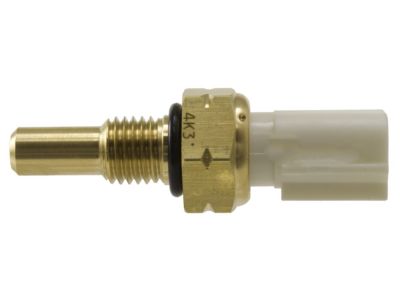×
- Live Chat
- 1-888-984-2011

My Garage
My Account
Cart
Genuine Honda Passport Coolant Temperature Sensor
Coolant Water Temperature Sensor- Select Vehicle by Model
- Select Vehicle by VIN
Select Vehicle by Model
orMake
Model
Year
Select Vehicle by VIN
For the most accurate results, select vehicle by your VIN (Vehicle Identification Number).
3 Coolant Temperature Sensors found
Honda Passport Sensor Assembly, Water Temperature (Denso)
Part Number: 37870-RTA-005$45.89 MSRP: $64.82You Save: $18.93 (30%)Honda Passport Sensor, Water Temperature
Part Number: 8-25036-979-0$28.89 MSRP: $40.80You Save: $11.91 (30%)
Honda Passport Coolant Temperature Sensor
The Coolant Temperature Sensor is an Essential part in the Honda Passport car where it regulates the temperature of the coolant to improve the performance of the engine. As a result, it plays an essential role in controlling the engine's conditions since the temperature of the coolant is frequently monitored by the sensor. There may be different kinds or kind of Coolant Temperature Sensors employed by all forms of Passport maybe through most of its model seasons; nonetheless, the original intention of this component stays the same: to simply regulate the car's engine temperature. As one of the essential sensors, it is significantly involved in the working capacity and durability of the vehicle's engine.
In search of affordable OEM Honda Passport Coolant Temperature Sensor? Consider browsing through our extensive inventory of genuine Honda Passport Coolant Temperature Sensor. Not only do we provide market-leading prices and a manufacturer's warranty, but we also pride ourselves on exceptional customer service and swift delivery.
Honda Passport Coolant Temperature Sensor Parts Questions & Experts Answers
- Q: How to check and replace the Coolant Temperature Sensor for the Honda Passport?A: To check the coolant temperature gauge, see if the fuses are blown. In case the needle reads "hot" with a cold engine, take off the wire going to the coolant temperature sender. If it falls, replace the sender unit. Otherwise, there is something wrong with either the wire or gauge itself. Different models of engines have different places where senders are fixed. Again, if the engine has warmed up and the gauge does not respond, ground that wire to test it further. Replace this sender if "Hot" is shown by the instrument cluster. In case it does not indicate overheating; an open circuit may be present or a defective gauge can be observed. Check resistance of this sender by heating it in water. Replace this item when necessary.
- Q: What is the Engine Coolant Temperature (ECT) Sensor on Honda Passport?A: The Engine Coolant Temperature (ECT) Sensor is a thermistor located in various places depending on the engine type. Check the resistance value of the sensor when cold and when warm, and compare to the values specified in the accompanying chart. If the resistance values are correct, check the reference voltage to the sensor from the PCM. Before installing the new sensor, wrap the threads with Teflon sealing tape, disconnect the electrical connector, handle it with care, install it securely, and check the coolant level.
Related Honda Passport Parts
Browse by Year
2023 Coolant Temperature Sensor 2022 Coolant Temperature Sensor 2021 Coolant Temperature Sensor 2020 Coolant Temperature Sensor 2019 Coolant Temperature Sensor 2001 Coolant Temperature Sensor 2000 Coolant Temperature Sensor 1999 Coolant Temperature Sensor 1998 Coolant Temperature Sensor 1997 Coolant Temperature Sensor 1996 Coolant Temperature Sensor 1995 Coolant Temperature Sensor 1994 Coolant Temperature Sensor
















